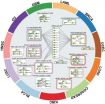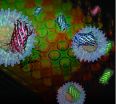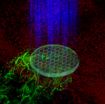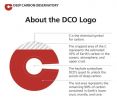INFORMATION:
The work was supported by the National Science Foundation (grants IIS-1016648 and CCF-1053753) and the National Institutes of Health (grants R01HG005690, R01HG007069, R01CA180776, and U01HG006517). END
Algorithm identifies networks of genetic changes across cancers
2014-12-15
(Press-News.org) PROVIDENCE, R.I. [Brown University] -- Using a computer algorithm that can sift through mounds of genetic data, researchers from Brown University have identified several networks of genes that, when hit by a mutation, could play a role in the development of multiple types of cancer.
The algorithm, called Hotnet2, was used to analyze genetic data from 12 different types of cancer assembled as part of the pan-cancer project of The Cancer Genome Atlas (TCGA). The research looked at somatic mutations -- those that occur in cells during one's lifetime -- and not genetic variants inherited from parents. The study identified 16 subnetworks of genes -- several of which have not previously received much attention for their potential role in cancer -- that are mutated with surprising frequency in the 3,281 samples in the dataset.
The researchers hope the new findings, published in Nature Genetics, will provide scientists with new leads in the search for somatic mutations that drive cancer. Additional data from the project, along with a downloadable version of the Hotnet2 software, is alsoavailable online.
"Ultimately, there will need to be laboratory experiments that confirm these findings," said Ben Raphael, associate professor of computer science, director of the Center for Computational Molecular Biology at Brown, and the paper's senior author. "But the hope is that the computational analysis will help prioritize the experiments toward those genes and mutations that are likely to be involved in cancer."
The research takes a different approach than many cancer genetics studies, which often look for mutations in single genes that occur frequently in cancer samples. Genes often do not work alone, but operate together to form networks and pathways that govern cell functions. In some cases, a mutation in any of the multiple genes in a pathway could cause a malfunction that leads to cancer. Because damaging mutations can be spread across multiple such networks of genes, it can be hard to detect them in statistical tests.
"When looking at single genes, you typically find a small number that you can confidently say are likely to be cancer genes," Raphael said. "But you also see many other genes that, statistically, you cannot say much about. You don't know if they're important or not."
The Hotnet2 algorithm analyzes genes at the network level, and that helps to identify mutations that occur rarely but are nonetheless important in cancer.
"For example, maybe there's a gene that's mutated in 80 percent of samples, but the other 20 percent have rare mutations in multiple other genes," Raphael said. "If we see that some of those rare mutations are in the same pathway as the more common one, it helps to build the case that those rare mutations are important."
The HotNet2 algorithm works by projecting mutation data from patients onto a map of known gene interactions and looking for connected networks that are mutated more often than would be expected by chance. The program represents frequently mutated genes as heat sources. By looking at the way heat is distributed and clustered across the map, the program finds the "hot" networks involved in cancer.
The original version of Hotnet was used to identify networks important in acute myeloid leukemia, ovarian cancer, and several other types of cancer. Hotnet2 was modified from the original in order to deal with the much larger and more complex pan-cancer dataset used in this most recent study.
All told, the algorithm picked out 16 different networks that appear to be important across cancer types. Several of those 16 were networks associated with genes and pathways that are known cancer drivers, which provides a validation of the algorithm, Raphael said. Examples in that group include the p53 and NOTCH pathways.
But the algorithm also identified pathways that are not as well known as being important in cancer. Those included protein complexes such as cohesin and condensin, both of which play roles in cell division and other cellular processes.
Raphael hopes that research like this could point the way toward new laboratory investigations of these genes to confirm and better understand the role they may play in cancer. Ultimately, Raphael and his colleagues hope their network analysis will eventually help patients more directly.
"The next step is translating all of this information from cancer sequencing into clinically actionable decisions," he said. "For example, there are now drugs that are used to treat patients who have mutations in particular genes. However, perhaps patients who don't have a mutation in the targeted gene, but have a mutation in the same pathway, might respond to the same drug. This is the kind of analysis we would like to perform next."
Max Leiserson, a student in Brown's computational biology Ph.D. program and lead author of the study, is excited about the future of computational approaches to genetics and biology. "This type of analysis wouldn't have been possible without the recent technological advances in both computing and DNA sequencing," he said. "It is a very exciting time to be working in computational biology."
Additional contributors to the study include co-lead author Fabio Vandin, and multiple postdoctoral fellows, graduate students and undergraduates from Brown's Department of Computer Science, Center for Computational Biology, and Department of Molecular Biology, Cell Biology, and Biochemistry. Joining them were scientists from several other institutions.
"It was really a great team effort," Raphael said
ELSE PRESS RELEASES FROM THIS DATE:
Neuronal circuits filter out distractions in the brain
2014-12-15
Cold Spring Harbor, NY - The next time you are in a crowded room, or a meeting, or even at the park with your kids, take a look around. How many people are on their phone? Distractions invade every aspect of our lives. Status updates, text messages, email notifications all threaten to steal our attention away from the moment. While we fight the urge to check the phone, our brains are making constant judgment calls about where to focus attention. The brain must continually filter important information from irrelevant interference.
Scientists have hypothesized for decades ...
Promising new method for rapidly screening cancer drugs
2014-12-15
AMHERST, Mass. - Traditional genomic, proteomic and other screening methods currently used to characterize drug mechanisms are time-consuming and require special equipment, but now researchers led by chemist Vincent Rotello at the University of Massachusetts Amherst offer a multi-channel sensor method using gold nanoparticles that can accurately profile various anti-cancer drugs and their mechanisms in minutes.
As Rotello and his doctoral graduate student Le Ngoc, one of the lead authors, explain, to discover a new drug for any disease, researchers must screen billions ...
Climate policy pledges are an important step forward but fall short of 2°C
2014-12-15
Researchers have released one of the most comprehensive assessments of the timing and amount of greenhouse gas emissions that each of the world's major economies could produce under different scenarios, i.e. without new climate policies, for the currently discussed pledges, and under a scenario that limits future temperature rise to 2°C. "The pledges made so far lead to earlier emission peaking in many countries, with 1-1.5 °C less total warming than without these policies, but not sufficient to meet the 2oC target. Under the proposed commitments, cumulative CO2 ...
Ancient wisdom boosts sustainability of biotech cotton
2014-12-15
Advocates of biotech crops and those who favor traditional farming practices such as crop diversity often seem worlds apart, but a new study shows that these two approaches can be compatible. An international team led by Chinese scientists and Bruce Tabashnik at the University of Arizona's College of Agriculture and Life Sciences discovered that the diverse patchwork of crops in northern China slowed adaptation to genetically engineered cotton by a wide-ranging insect pest. The results are published in the advance online edition of Nature Biotechnology.
Genetically engineered ...
Migrating 'supraglacial' lakes could trigger future Greenland ice loss
2014-12-15
Predictions of Greenland ice loss and its impact on rising sea levels may have been greatly underestimated, according to scientists at the University of Leeds.
The finding follows a new study, which is published today in Nature Climate Change, in which the future distribution of lakes that form on the ice sheet surface from melted snow and ice - called supraglacial lakes - have been simulated for the first time.
Previously, the impact of supraglacial lakes on Greenland ice loss had been assumed to be small, but the new research has shown that they will migrate farther ...
Stunning zinc fireworks when egg meets sperm
2014-12-15
Sparks literally fly when a sperm and an egg hit it off. The fertilized mammalian egg releases from its surface billions of zinc atoms in "zinc sparks," one wave after another, a Northwestern University-led interdisciplinary research team has found.
Using cutting-edge technology they developed, the researchers are the first to capture images of these molecular fireworks and pinpoint the origin of the zinc sparks: tiny zinc-rich packages just below the egg's surface.
Zinc fluctuations play a central role in regulating the biochemical processes that ensure a healthy ...
Molecular 'hats' allow in vivo activation of disguised signaling peptides
2014-12-15
When someone you know is wearing an unfamiliar hat, you might not recognize them. Georgia Institute of Technology researchers are using just such a disguise to sneak biomaterials containing peptide signaling molecules into living animals.
When the disguised peptides are needed to launch biological processes, the researchers shine ultraviolet light onto the molecules through the skin, causing the "hat" structures to come off. That allows cells and other molecules to recognize and interact with the peptides on the surface of the material.
This light-activated triggering ...
Joslin discovery may hold clues to treatments that slow aging
2014-12-15
BOSTON - December 15, 2014 - In a study published today by Nature, researchers at Joslin Diabetes Center used a microscopic worm (C. elegans) to identify a new path that could lead to drugs to slow aging and the chronic diseases that often accompany it--and might even lead to better cosmetics.
The Joslin team looked at how treatments known to boost longevity in the one-millimeter long C. elegans (including calorie restriction and treatment with the drug rapamycin) affected the expression of genes that produce collagen and other proteins that make up the extra-cellular ...
Scientists observe the Earth grow a new layer under an Icelandic volcano
2014-12-15
New research into an Icelandic eruption has shed light on how the Earth's crust forms, according to a paper published today in Nature.
When the Bárðarbunga volcano, which is buried beneath Iceland's Vatnajökull ice cap, reawakened in August 2014, scientists had a rare opportunity to monitor how the magma flowed through cracks in the rock away from the volcano. The molten rock forms vertical sheet-like features known as dykes, which force the surrounding rock apart.
Study co-author Professor Andy Hooper from the Centre for Observation and Modelling ...
The Deep Carbon Observatory: Quantities, movements, forms & origins of Earth's carbon
2014-12-15
The carbon in the atmosphere, ocean, surface life, and other shallow, near surface reservoirs accounts for only about 10% of Earth's carbon. Where is the other 90%? What is it doing? Does it matter?
The Deep Carbon Observatory (DCO), an ambitious 10-year (2009-2019) program of exploration and experimentation, pursues the mysterious 90% while building a new scientific field with a network of scientists from more than 40 countries. Recent results from DCO researchers are filling in the global carbon puzzle with findings that extend our understanding of the origins and limits ...







